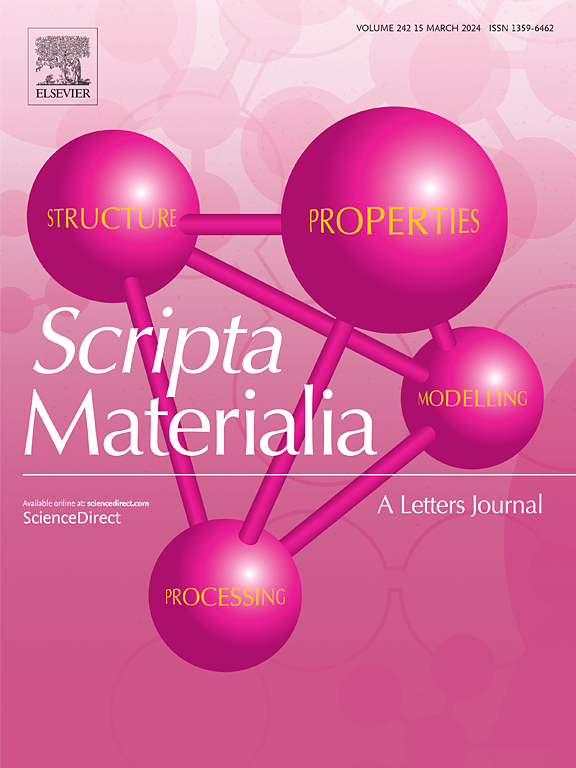时效Mg-Gd-Y-Nd-Zr合金室温拉伸变形屈服行为转变机理
IF 5.6
2区 材料科学
Q2 MATERIALS SCIENCE, MULTIDISCIPLINARY
引用次数: 0
摘要
首次揭示了细晶镁合金室温不连续屈服的微观机制,强调了移动位错的关键作用。随着时效时间的延长,屈服行为由不连续转变为连续。不连续屈服行为是由于初始微观结构中的部分移动位错克服了拉伸变形过程中亚晶界和lagb造成的障碍。移动位错在高应力下激活,并穿过亚晶界或lagb,导致应力突然下降,随后出现应力平台。时效12 h后,β′相稳定了lagb以防止位错跨越,但仍允许一些位错跨越亚晶界,从而缩短了屈服平台期。时效时间延长至32 h后,高密度β′相有效地钉住位错,稳定亚晶界和lagb,从而抑制位错运动,完全消除不连续屈服。本文章由计算机程序翻译,如有差异,请以英文原文为准。
Transformation mechanism of yielding behavior in the aged Mg-Gd-Y-Nd-Zr alloy during room temperature tensile deformation
The microscopic mechanism of room-temperature discontinuous yielding in fine-grained Mg alloy is revealed for the first time, highlighting the critical role of mobile dislocations. The yielding behavior transitioned from discontinuous to continuous with increasing aging time. Discontinuous yielding behavior is attributed to partial mobile dislocations within the initial microstructure overcoming obstacles posed by subgrain boundaries and LAGBs during tensile deformation. The mobile dislocations activated under high stress and traversed subgrain boundaries or LAGBs, resulting in a sudden stress drop followed by a stress plateau. After aging for 12 h, the β' phase stabilizes the LAGBs to prevent dislocation crossing them, but still allows some dislocations to cross subgrain boundaries, resulting in a shortened yield plateau. Upon extending aging time to 32 h, high-density β' phases effectively pins dislocations and stabilizes both subgrain boundaries and LAGBs, thereby suppressing dislocation movement and completely eliminating discontinuous yielding.
求助全文
通过发布文献求助,成功后即可免费获取论文全文。
去求助
来源期刊

Scripta Materialia
工程技术-材料科学:综合
CiteScore
11.40
自引率
5.00%
发文量
581
审稿时长
34 days
期刊介绍:
Scripta Materialia is a LETTERS journal of Acta Materialia, providing a forum for the rapid publication of short communications on the relationship between the structure and the properties of inorganic materials. The emphasis is on originality rather than incremental research. Short reports on the development of materials with novel or substantially improved properties are also welcomed. Emphasis is on either the functional or mechanical behavior of metals, ceramics and semiconductors at all length scales.
 求助内容:
求助内容: 应助结果提醒方式:
应助结果提醒方式:


